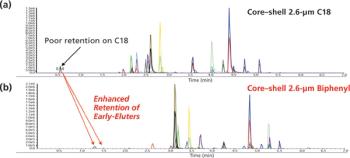A team of researchers at the University of Huddersfield, UK, has investigated the potential of okra for emulsification of certain food products using size-exclusion chromatography (SEC) and fourier transform infrared (FTIR) spectroscopy.1 Okra is a flowering plant and originates from Africa. Okra pectins are acidic, random coil polysaccharides composed of galactose, rhamnose, and galacturonic acid. Pectins are used in the food industry for their gelling, stabilizing, and thickening properties. Okra pectins differ quite substantially from those extracted from apple, citrus, and beet in terms of protein and acetyl contents, indicating their greater hydrophobicity and suggesting that pectin derived from okra can be used as an effective emulsifying agent.?






